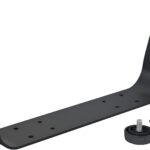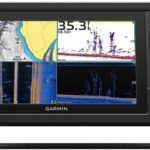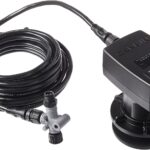You are about to discover the secrets to becoming a master in the art of casting. In this article, you will learn a variety of techniques and tricks that will not only help you achieve greater distance in your casts but also improve your accuracy. Whether you are a seasoned angler looking to take your skills to the next level or a beginner eager to learn the ropes, these valuable insights will undoubtedly enhance your fishing experience. Get ready to elevate your game as we delve into the world of casting mastery.
Casting Techniques
Casting in fly fishing is one of the fundamental skills that every angler should master. By understanding and practicing different casting techniques, you can improve your distance and accuracy, leading to more successful and enjoyable fishing trips. In this article, we will explore various casting techniques, casting mechanics, casting drills, line management, casting accessories, and common casting mistakes. Whether you are a beginner or an experienced angler, there is always something new to learn and enhance your casting skills.
The Overhead Cast
The overhead cast is the basic casting technique that every angler should start with. It involves casting the line in a forward motion over your shoulder and releasing it in front of you. This cast allows you to achieve distance and accuracy by utilizing the power and flexibility of the fly rod. By mastering the overhead cast, you gain the foundation to progress to more advanced casting techniques.
The Roll Cast
The roll cast is a useful casting technique for casting in tight spaces or dealing with obstacles such as vegetation or riverbanks. Instead of casting the line in a forward motion, the roll cast involves rolling the line on the water’s surface, allowing you to make accurate and controlled casts in confined areas. By mastering the roll cast, you can cast with precision even in challenging fishing conditions.
The Sidearm Cast
The sidearm cast is a casting technique that involves casting the line parallel to the water’s surface. This technique is beneficial when dealing with strong winds or casting under tree canopies. The sidearm cast allows you to minimize wind resistance and maintain control over your line. It is particularly effective when you need to cast accurately in low-clearance situations.
The Pitch Cast
The pitch cast is a casting technique that combines elements of both the overhead and sidearm casts. It is a versatile technique that allows you to cast the line with accuracy and precision over short distances. By utilizing a flicking motion with your wrist, you can make quick and accurate casts without overpowering the rod.
The Underhand Cast
The underhand cast, also known as the bow-and-arrow cast, is a specialized casting technique that is often used in tight and confined spaces, such as when casting underneath overhanging branches. It involves drawing the line back between the rod and your target, forming a loop, and then releasing the loop towards the target. This cast allows for accurate and controlled casting in challenging fishing situations.
Casting Mechanics
To become a proficient caster, it is essential to understand and master the mechanics of casting. These mechanics include grip and stance, rod positioning, rod loading, pulling and timing, and follow-through. By focusing on these elements and practicing the correct techniques, you can achieve more efficient and effective casts.
Grip and Stance
The grip and stance are the foundation of your casting technique. A proper grip on the rod ensures control and precision during the casting motion. Generally, the grip should be firm but not excessively tight, allowing for flexibility and smooth movement. Your stance should be balanced, with your feet shoulder-width apart and your body slightly leaning forward. This posture provides stability and allows for efficient transfer of energy from your body to the rod.
Rod Positioning
Proper rod positioning is crucial for generating power and accuracy in your casts. The rod should be positioned with the tip pointed slightly upward, forming an angle of around 45 degrees. This angle enables you to load the rod efficiently and generate maximum power during the casting motion. Additionally, keeping the rod in the correct position allows for smoother line release and improved accuracy.
Rod Loading
Rod loading involves bending the rod during the casting motion to store energy, which is then released to propel the line forward. To load the rod correctly, you need to accelerate smoothly during the backcast and forward cast. This gradual acceleration allows the rod to flex and store energy efficiently. Timing is crucial in rod loading, as releasing the energy at the right moment leads to a powerful and accurate cast.
Pulling and Timing
Pulling and timing are critical components of the casting motion. The pulling motion involves pulling the line with a smooth and controlled movement, allowing the rod to load and generate power. The timing of the pull is crucial, as it determines the accuracy and distance of your cast. Timing refers to the precise moment when the line is released and the power is transferred from the rod to the line. Achieving proper timing requires practice and coordination between your pulling motion and the movement of the rod.
Follow Through
The follow-through is the final part of the casting motion and is often overlooked by anglers. It involves continuing the casting motion after the line has been released. A proper follow-through ensures that the rod finishes in the correct position, allowing for a smoother and more accurate cast. Neglecting the follow-through can result in an inefficient casting stroke and reduced accuracy. Practice maintaining a consistent and complete follow-through to improve your casting technique.
Casting Drills
To enhance your casting skills, incorporating casting drills into your practice routine is essential. These drills help refine your technique, improve muscle memory, and develop consistency in your casting motion. Here are five casting drills to incorporate into your practice sessions:
Practice Casting in Open Spaces
Find an open area, such as a field or park, to practice your casting technique. Start with shorter casts and gradually increase the distance as you become more comfortable. Focus on maintaining proper form and technique throughout your practice session.
Utilize Targets and Distance Markers
Set up targets or distance markers to challenge yourself and improve your accuracy. Aim for specific points or markers to simulate real fishing scenarios. This drill helps develop muscle memory and hand-eye coordination, leading to more precise and accurate casts.
Focus on Accuracy and Precision
Set up cones or other visual markers at different distances and practice casting to specific targets. Focus on delivering the fly accurately to the target, mimicking real fishing situations. By practicing accuracy and precision, you can improve your ability to present the fly effectively to the fish.
Try Casting with Different Weights
Experiment with different fly line weights and setups to improve your casting adaptability. Casting with heavier lines requires adjustments to your casting technique, allowing you to develop a broader range of skills. Practice casting with both light and heavy lines to improve your overall casting versatility.
Practice Casting in Challenging Conditions
Simulate challenging fishing conditions by practicing casting in windy or low-light situations. By incorporating these variables into your practice routine, you can develop the skills necessary to handle adverse conditions effectively. Adjust your technique to work with the wind or low-light conditions, ensuring accurate and controlled casts.
By incorporating these casting drills into your practice routine, you can improve your casting skills, develop muscle memory, and prepare yourself for a variety of fishing situations.
Line Management
Proper line management is crucial for successful casting and efficient fishing. Managing the line involves techniques such as mending, avoiding line drag, preventing tangles and twists, storing and coiling the line, and regular cleaning and maintenance. By paying attention to line management, you can maximize your casting distance and accuracy, as well as prolong the lifespan of your fly line.
Mending the Line
Mending the line involves making adjustments to the position of the fly line on the water’s surface to achieve a natural drift and presentation. It is particularly important when fishing in rivers or streams with varying currents. By mending the line, you can prevent unwanted drag that may affect the presentation of your fly. Practice different mending techniques to improve your ability to control the line and achieve better fishing results.
Managing Line Drag
Line drag occurs when the fly line is affected by the current, wind, or incorrect casting technique, resulting in unnatural movement of the fly. To minimize line drag, ensure that your casting stroke and timing are precise and efficient. Additionally, using techniques such as mending and applying floatant or sinkant as appropriate can help reduce line drag. By managing line drag, you increase your chances of enticing fish to strike and improve the effectiveness of your presentations.
Avoiding Tangles and Twists
Tangles and twists in the fly line can significantly hinder your casting distance and accuracy. To avoid tangles, practice proper line control during the cast and ensure that the line is not allowed to cross over itself. Casting with a regular and steady rhythm can also help prevent tangles. If you do encounter tangles or twists, take the time to untangle them properly before continuing to fish. Neglecting tangled lines will only lead to frustration and reduced performance.
Storing and Coiling the Line
Properly storing and coiling the fly line when not in use can prolong its lifespan and prevent unnecessary tangles. Avoid leaving the line exposed to the sun for extended periods, as this can cause damage and decrease its performance. Instead, coil the line loosely and store it in a cool and dry place. When you’re ready to fish, properly stretch and straighten the line before casting to achieve optimal performance.
Cleaning and Maintenance
Regular cleaning and maintenance of your fly line are essential for maintaining its performance and longevity. Use a mild soap or specialized fly line cleaner to remove dirt, debris, and oils that may accumulate on the line. Follow the manufacturer’s recommendations for cleaning and drying the line. Additionally, periodically inspect the line for any signs of damage or wear, such as cracks or excessive fraying. Taking care of your fly line will ensure that it performs optimally and lasts for many seasons of fishing.
By practicing effective line management techniques, you can optimize your casting distance and accuracy, enhance your presentations, and prolong the lifespan of your fly line.
Casting Accessories
In addition to mastering the casting techniques and mechanics, utilizing appropriate casting accessories can further enhance your casting performance. These accessories include choosing the right fly line, selecting the appropriate leader and tippet, using casting aids and indicators, utilizing line weight and sink tips, and applying floatant and sinkant as needed.
Choosing the Right Fly Line
Selecting the proper fly line for your fishing conditions and target species is crucial for optimal casting performance. Consider factors such as line weight, taper, and sink rate when choosing a fly line. Heavier lines are better suited for casting larger flies or in windy conditions, while lighter lines excel in delicate presentations. Taper and sink rate determine how the line casts and sinks, influencing your ability to control the fly during fishing. Consult with local experts or refer to manufacturer recommendations to choose the right fly line for your fishing needs.
Selecting the Appropriate Leader and Tippet
Leaders and tippets connect the fly line to the fly and play a significant role in casting and presentation. Choose leaders and tippets of appropriate length and strength for your target species and fishing conditions. Shorter leaders provide more accuracy, while longer leaders are better suited for delicate presentations. Ensure the leader and tippet are properly connected and tapered to maintain a smooth transfer of energy during casting.
Using Casting Aids and Indicators
Casting aids and indicators can assist in improving casting accuracy, distance, and line control. A casting aid, such as a practice rod or casting tape, can help you practice your casting stroke and develop muscle memory. Indicators, such as strike indicators or buoyant materials, can be attached to the leader to detect subtle bites or indicate the fly’s location. Experiment with different casting aids and indicators to find what works best for your casting style and fishing conditions.
Using Line Weight and Sink Tips
Adjusting the line weight and incorporating sink tips can modify your casting stroke and improve your fishing effectiveness. Heavier line weights allow for casting larger and heavier flies, enabling you to target larger fish or cast in adverse conditions. Sink tips modify the sink rate of the fly, allowing you to fish at different depths in the water column. By experimenting with different line weights and sink tips, you can adapt to various fishing scenarios and increase your chances of success.
Applying Floatant and Sinkant
Floatant and sinkant are substances that can be applied to the fly or leader to enhance its buoyancy or sink rate. Floatant is used to treat dry flies, ensuring they float on the water’s surface and imitate an insect more effectively. Sinkant, on the other hand, is used to treat nymphs or streamers, enabling them to sink quickly to the desired depth. Proper application of floatant and sinkant can improve the fly’s presentation, increase visibility, and increase your chances of enticing fish to strike.
By utilizing the appropriate casting accessories, you can enhance your casting performance, improve your presentations, and adapt to a wider range of fishing situations.
Casting Techniques for Distance
Casting for distance requires a combination of proper technique, timing, and line management. By utilizing specific techniques, you can increase your casting distance and cover more water effectively.
Utilize the Double Haul
The double haul is a casting technique that allows you to generate more line speed and power, resulting in longer casts. It involves an additional pulling motion with the line hand during the casting stroke. The pulling motion in both the backcast and forward cast increases tension on the line, accelerating the rod and generating more energy. Practice the double haul technique to add distance to your casts and reach areas that were previously out of range.
Aerialize More Line
To increase your casting distance, you can learn to aerialize more line during your backcast. This technique involves releasing more line on your backcast, allowing it to extend behind you before initiating the forward cast. By aerializing more line, you can maximize the loading of the rod and generate more power and distance during the forward cast. Practice gradually increasing the amount of line you aerialize to improve your casting distance.
Utilize Efficient Casting Arcs
Efficient casting arcs allow for maximum power transfer and line speed. Focus on creating a smooth and efficient casting motion, utilizing a 180-degree arc while casting. Make sure that both your backcast and forward cast follow a straight line, avoiding any unnecessary deviations that may reduce line speed. By optimizing your casting arcs, you can maximize the transfer of energy and achieve greater casting distance.
Increase Line Speed
Increasing line speed is crucial for achieving greater casting distance. Line speed refers to the velocity at which the fly line moves through the air during the casting motion. To increase line speed, focus on accelerating smoothly and consistently throughout the casting stroke. Gradually increase the speed of your casting motion while maintaining control and precision. By increasing line speed, you can achieve longer casts and cover more water effectively.
Optimize Casting Stroke Length
The length of your casting stroke affects the distance you can achieve. A longer casting stroke allows for a greater loading of the rod and generates more power during the casting motion. Practice lengthening your casting stroke while maintaining proper technique and timing. By optimizing your casting stroke length, you can increase your casting distance and reach those distant fish-holding spots.
By incorporating these casting techniques for distance into your casting repertoire, you can cover more water effectively, reach previously inaccessible areas, and improve your overall fishing success.
Casting Techniques for Accuracy
While distance is essential, casting accuracy is crucial for successfully presenting the fly to the fish. By focusing on specific techniques, you can enhance your casting accuracy and increase your chances of enticing fish to strike.
Focus on Proper Line Alignment
Proper line alignment is crucial for casting accuracy. Ensure that the fly line and leader are aligned with the intended target before initiating the casting motion. Misalignment can result in inaccurate casts and missed opportunities. Take the time to line up your cast, focus on the target, and make slight adjustments as needed to achieve accurate presentations.
Accuracy Through Practice and Visualization
Practicing casting accuracy is essential for developing muscle memory and improving your ability to hit specific targets. Set up targets or use natural features such as rocks or branches to simulate real fishing scenarios. Focus on visualizing your cast and the trajectory of the fly. By consistently practicing and visualizing accurate casts, you can improve your casting accuracy and increase your chances of presenting the fly precisely where you want it.
Adjusting Casting Stroke for Accuracy
Making slight adjustments to your casting stroke can significantly impact your casting accuracy. When casting to specific targets, focus on shortening your casting stroke slightly to provide more control and precision. Practice incorporating these adjustments into your casting technique to improve accuracy in different fishing situations.
Utilizing Reach Casts
Reach casts are casting techniques that allow you to place the fly line and leader above the fly, providing a natural drift and presentation. By using reach casts, you can avoid dragging the fly across the water’s surface, increasing the likelihood of fish strikes. Practice different reach casting techniques, such as the reach mend or the reach curve, to enhance your ability to present the fly accurately and attractively.
Mending for Accuracy
Mending the line after the cast can significantly impact the presentation and accuracy of your fly. Proper mending allows for a natural drift, minimizing line drag and maintaining control over the fly. Practice different mending techniques, such as stack mending or aerial mending, to achieve accurate presentations and improve your chances of enticing fish to strike.
By incorporating these casting techniques for accuracy into your fishing arsenal, you can present the fly precisely where you want it and increase your chances of success on the water.
Casting in Different Conditions
Fishing conditions are rarely ideal, and being able to adapt your casting to different situations is crucial for a successful day on the water. By mastering techniques for casting in windy conditions, tight spaces, from various angles, with obstacles, and in low-light situations, you can overcome these challenges and make accurate and effective casts.
Casting in Windy Conditions
Fishing in windy conditions requires adjustments to your casting technique. Focus on using the sidearm cast or the double haul to minimize wind resistance and maintain line control. By making low, powerful casts into the wind, you can achieve accuracy and distance even in gusty conditions. Additionally, using heavier lines and flies can help cut through the wind more efficiently, allowing for better presentations.
Casting in Tight Spaces
Casting in tight spaces, such as densely vegetated areas or narrow streams, requires precision and control. Use roll casts or underhand casts to navigate obstacles and make accurate presentations in tight quarters. Practice these techniques in open spaces to enhance your ability to cast in confined areas effectively.
Casting from Various Angles
Casting from different angles allows you to present the fly to the fish from a variety of directions, increasing your chances of a strike. Practice casting from different angles, such as upstream, downstream, or across the current, to enhance your versatility and adaptability. By mastering casting from various angles, you can effectively cover different water types and improve your overall fishing success.
Casting with Obstacles
When fishing near obstacles, such as overhanging branches or rocks, adapting your casting technique is crucial. Utilize roll casts, sidearm casts, or bow-and-arrow casts to avoid snagging the fly and make accurate presentations. Practice incorporating these casting techniques into your repertoire to handle challenging fishing situations with confidence.
Casting in Low-Light Situations
Low-light situations, such as early morning or late evening, require adjustments to your casting technique. Focus on using sidearm casts or roll casts to minimize visibility to the fish and make accurate presentations. Additionally, using brightly colored flies or attaching an indicator can help you track the fly’s location in low-light conditions. By adjusting your casting technique and utilizing visual aids, you can effectively fish during low-light situations.
By mastering casting techniques for different fishing conditions, you can adapt and overcome challenges that may arise during your angling adventures.
Common Casting Mistakes
Even the most experienced anglers make casting mistakes from time to time. By recognizing and addressing these common casting mistakes, you can improve your casting technique and increase your chances of success on the water.
Using Too Much Force
One common casting mistake is using too much force during the casting motion. Overpowering the rod can result in poor line control, inaccurate casts, and inefficient energy transfer. Focus on using smooth and controlled movements to generate power, rather than relying solely on force. Develop a casting rhythm that allows for efficient energy transfer and precision.
Improper Line Control
Proper line control is crucial for successful casting and effective fishing. Failure to control the line during the casting motion can result in tangles, twists, or loss of accuracy. Concentrate on maintaining constant tension on the line and utilizing proper hauling techniques to achieve optimal line control. Practice hauling and line control drills to develop muscle memory and improve your line management skills.
Bad Timing and Rhythm
Timing and rhythm are essential components of a successful cast. Improper timing can result in the loss of power, accuracy, and distance. Practice the correct timing and coordination between your pulling motion and the casting stroke to achieve optimal results. Developing a consistent and smooth casting rhythm will improve your overall casting performance.
Ignoring Rod Loading
Rod loading is a fundamental aspect of casting and allows for the efficient transfer of energy from the rod to the line. Ignoring or neglecting rod loading can result in weak, inaccurate casts. Focus on accelerating smoothly and gradually during the casting stroke to load the rod effectively. By paying attention to rod loading, you can maximize your casting power and achieve more accurate presentations.
Inefficient Follow Through
An inefficient follow-through is a common casting mistake that can impact the accuracy and smoothness of your cast. Neglecting the follow-through can result in an abrupt stop of the rod, reducing line speed and accuracy. Practice maintaining a consistent and complete follow-through to improve your casting technique. A proper follow-through ensures that the rod finishes in the correct position, allowing for smoother line release and improved accuracy.
By recognizing and addressing these common casting mistakes, you can refine your technique and improve your overall casting performance.
Advanced Casting Techniques
For anglers seeking to take their casting skills to the next level, several advanced casting techniques can further enhance their abilities. These techniques include spey casting, roll cast pick-up, slack-line casting, curve casts, and backhand casts.
Spey Casting
Spey casting is a specialized casting technique primarily used in spey fishing or when dealing with obstacles that limit the backcast. It involves utilizing water tension to load the rod, allowing for effortless and powerful casts. Spey casting requires specific equipment, such as a spey rod, spey line, and leader setup. Learn the fundamentals of spey casting and practice with experienced instructors to master this advanced technique.
Roll Cast Pick-Up
The roll cast pick-up technique allows you to immediately transition from the previous drift to a backcast without repositioning the fly. It is especially useful when fishing stillwaters or when quick follow-up casts are necessary. Mastering the roll cast pick-up requires proper line control and timing. Practice this technique to improve your efficiency on the water and cover more water effectively.
Slack-Line Casting
Slack-line casting is a casting technique that creates deliberate slack in the leader and fly, allowing for a natural drift and presentation. It is particularly useful when presenting dry flies or imitating insects on the water’s surface. By incorporating slack-line casts into your repertoire, you can improve your ability to fool trout and achieve more lifelike drifts.
Curve Casts
Curve casts are casting techniques that allow you to present the fly in a curved path. They are particularly effective when dealing with obstacles or when trying to imitate the movement of a natural insect. Practice different curve cast variations, such as the curve mend or the curve reach cast, to enhance your ability to make accurate presentations and fool fish in challenging fishing scenarios.
Backhand Casts
Backhand casts involve casting the line and fly in the opposite direction of your casting hand. It is a useful technique when casting in tight spaces or when dealing with wind blowing from the opposite direction. By mastering the backhand cast, you can cast more effectively in various fishing situations and increase your chances of success.
By incorporating these advanced casting techniques into your angling arsenal, you can further enhance your casting skills and adapt to a wider range of fishing scenarios. Practice and patience are key when learning these techniques, so be sure to dedicate time to master them.
In conclusion, casting is a fundamental skill in fly fishing that every angler should strive to master. By understanding and practicing different casting techniques, focusing on proper casting mechanics, incorporating casting drills into your practice routine, and effectively managing your line and casting accessories, you can enhance your casting distance and accuracy, adapt to different fishing conditions, and improve your chances of success on the water. Remember to be patient, practice regularly, and seek guidance from experienced anglers or instructors as you refine your casting technique. With time and dedication, you can become a proficient caster and ultimately enjoy a more rewarding fly fishing experience.









